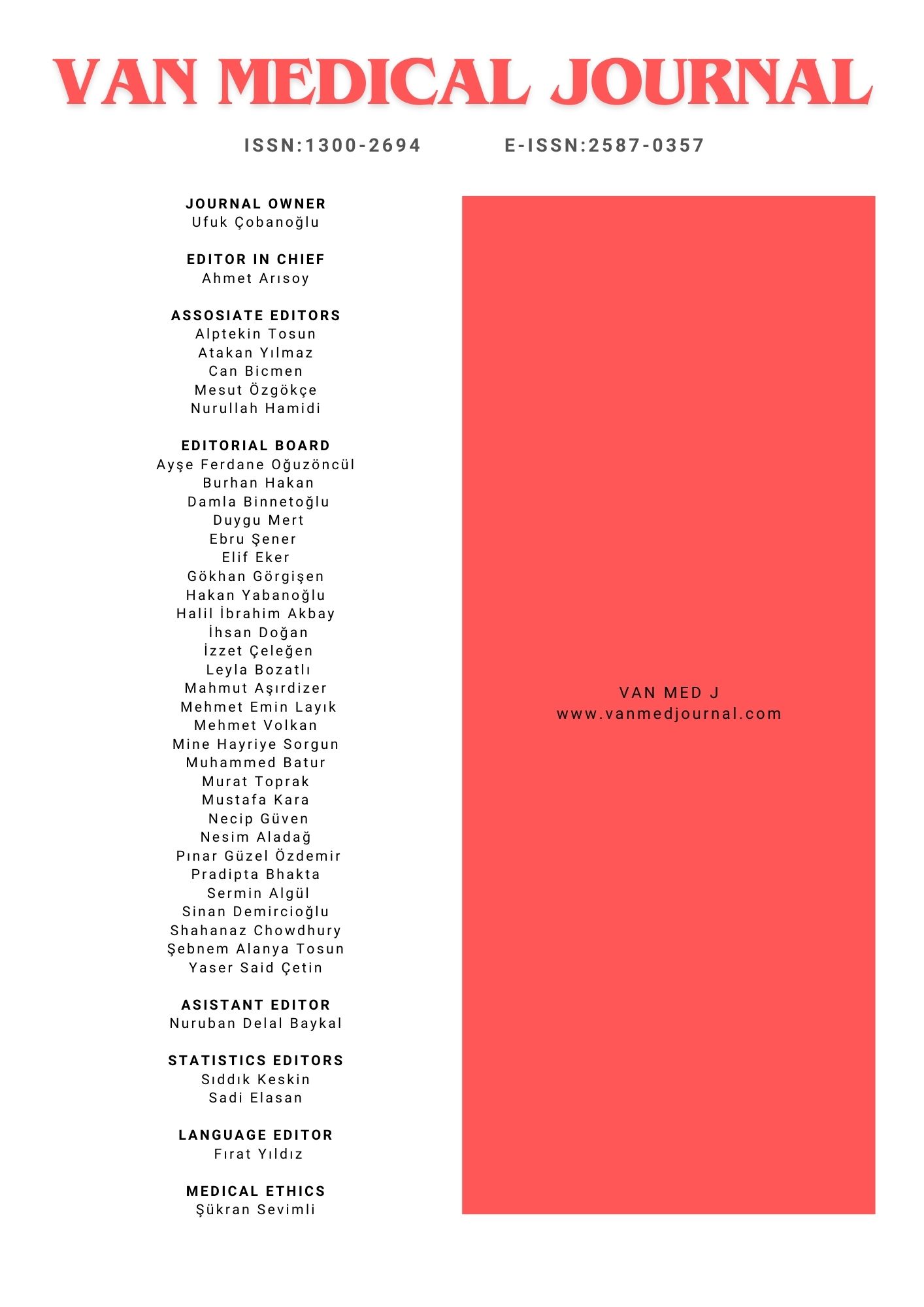How do the Different Levels of Femoral Osteotomy Applied for Femoral Shortening and/or Derotation in the Treatment of DDH Affect Radiological and Clinical Outcomes
Tülin Türközü1, Suna Akkol21Department of Orthopedics and Traumatology, Faculty of Medicine, Yüzüncü Yıl University, Van, Turkey2Department of Animal Science, Faculty of Agriculture,Yüzüncü Yıl University, Van, Turkey
INTRODUCTION: In the present study, different femoral osteotomy levels applied in the combined surgical treatment of the patients aged over 2 years with developmental dysplasia of hip (DDH) were compared. It was aimed to determine the advantages and disadvantages of the osteotomies performed at the shaft and subtrochanteric regions of the femur and to evaluate their radiological and clinical impact on hip development.
METHODS: The study included the patients aged over 2 years with DDH who were applied open reduction, Pemberton pericapsular osteotomy and femoral osteotomy. The demographic information, clinical evaluations and radiographic results of the patients were applied from the medical records. In addition, radiation exposure (the number of fluoroscopic images), operation duration and present of complications were evaluated. The hips were divided into two groups based on the level of femoral osteotomy as shaft (group 1) and subtrochanteric (group 2) groups. The Tönnis Classification System was used to assess the grade of preoperative hip dysplasia. Radiological evaluation was performed according to Severin’s criteria while modified McKay’s criteria was applied for clinical evaluation. Kalamachi and MacEwen’s criteria were preferred for evaluation of avascular necrosis (AVN).
RESULTS: Of the 46 hips, 21 hips were in the body group and 25 hips were in the subthoracanteric group. No statistically significant difference was present between the groups in terms of age, Tönnis type of hip dysplasia, preoperative acetabular index, postoperative acetabular index, preoperative collo-diaphyseal angle, postoperative collo-diaphyseal angle and derotation grade (p>0.05). The difference between the follow-up durations of the groups was statistically significant. The follow-up duration of the group 1 was shorter than the group 2. Although, clinical results in the group 1 were proportionally better than the group 2, no statistically significant difference was determined between the groups (p= 0.1264). A statistically significant difference was detected between the groups in terms of radiological results (p= 0.0008). AVN was found in none of the hips in the group 1 whereas 8 hips were detected with AVN in the group 2. The difference between the groups regarding femoral head AVN was statistically significant (p=0.0043). There was a statistically significant difference between the groups in terms of operation duration and radiation exposure (p<0.0001). Subluxation or redislocation developed in none of the cases.
DISCUSSION AND CONCLUSION: Femoral osteotomy performed for femoral shortening and derotation at the region of femoral shaft can be used as an alternative surgical procedure without increasing the risk for AVN in the pediatric patients aged over 2 years with DDH.
GKD Tedavisinde Femoral Kısaltma ve/veya Derotasyon için Uygulanan Farklı Seviyelerdeki Femoral Osteotomi Radyolojik ve Klinik Sonuçları Nasıl Etkiler?
Tülin Türközü1, Suna Akkol21Yüzüncü Yıl Üniversitesi Tıp Fakültesi Ortopedi ve Travmatoloji Ana Bilim Dalı, Van2Yüzüncü Yıl Üniversitesi Ziraat Fakültesi, Zootekni Bölümü, Biyometri Ve Genetik Anabilim Dalı, Van
GİRİŞ ve AMAÇ: Bu çalışmada, 2 yaş üstü gelişimsel kalça displazili (GKD) hastaların combine cerrahi tedavisinde uygulanan farklı femoral osteotomi seviyeleri karşılaştırıldı. Cisim ve subtorakanterik bölgeden yapılan osteotomilerin avantaj ve dezavantajlarının belirlenmesi ve kalça gelişimine etkisinin radyolojik ve klinik olarak değerlendirilmesi amaçlandı.
YÖNTEM ve GEREÇLER: Açık redüksiyon, Pemberton perikapsüler osteotomi (PPO) ve femoral osteotomi uygulanan 2 yaş ve üstü GKD’li hastalar çalışmaya dahil edildi. Tıbbi kayıtlardan hastaların demografik bilgileri, klinik değerlendirmeleri ve radyolojik sonuçları elde edildi. Ayrıca radyasyon maruziyeti (floroskopik görüntü sayısı), operasyon süresi, komplikasyonların varlığı değerlendirildi. Kalçalar femoral osteotomi seviyesine göre, cisim (grup 1) ve subtorakanterik (grup 2) olarak iki gruba ayrıldı. Preoperatif kalça çıkığının derecesini değerlendirmek için Tönnis sınıflandırma sistemi kullanıldı. Radyolojik değerlendirmede Severin kriterleri, klinik değerlendirme modifiye McKay değerlendirme kriterleri kullanıldı. Avasküler nekroz (AVN) değerlendirmesinde ise Kalamachi ve MacEwen kriterleri tercih edildi.
BULGULAR: 46 kalçadan 21 kalça cisim grubunda, 26 kalça subtorakanterik gruptaydı. Yaş, Tönnis kalça tipi, ameliyat öncesi asetabular index (Aİ), ameliyat sonrası Aİ, ameliyat öncesi kollodiafizer açı, ameliyat sonrası kollodiafizer açı ve derotasyon derecesi açısından gruplar arasında istatistiksel olarak anlamlı fark yoktu ( p>0.05). Takip süresi bakımından gruplar arasındaki fark istatistiksel olarak anlamlıydı. Grup 1, grup 2’ye göre daha kısa takip süresine sahipti. Oransal olarak grup 1 deki klinik sonuçlar grup 2 ye göre daha iyi olsa da gruplar arasında istatistiksel olarak anlamlı fark saptanmadı (p=0.1264). Radyolojik sonuçlar açısından gruplar arasında istatistiksel olarak anlamlı fark saptandı (p=0.0008). Grup 1’de hiçbir kalçada AVN saptanmazken grup 2 de 8 kalçada AVN saptandı. Gruplar arasında femur başı AVN bakımından fark istatistiksel olarak anlamlıydı (p=0.0043). Operasyon süresi ve radyasyon maruziyeti açısından gruplar arasında istatistiksel olarak anlamlı fark vardı (p<0,0001). Hiçbir olguda subluksasyon veya redislokasyon gelişmedi.
TARTIŞMA ve SONUÇ: Femoral kısaltma ve derotasyon için cisim bölgesinden yapılan femoral osteotomi, AVN riskini artırmaksızın 2 yaş üstü GKD’li çocukların tedavisinde, alternatif bir cerrahi procedür olarak kullanılabilir
Corresponding Author: Tülin Türközü, Türkiye
Manuscript Language: Turkish

